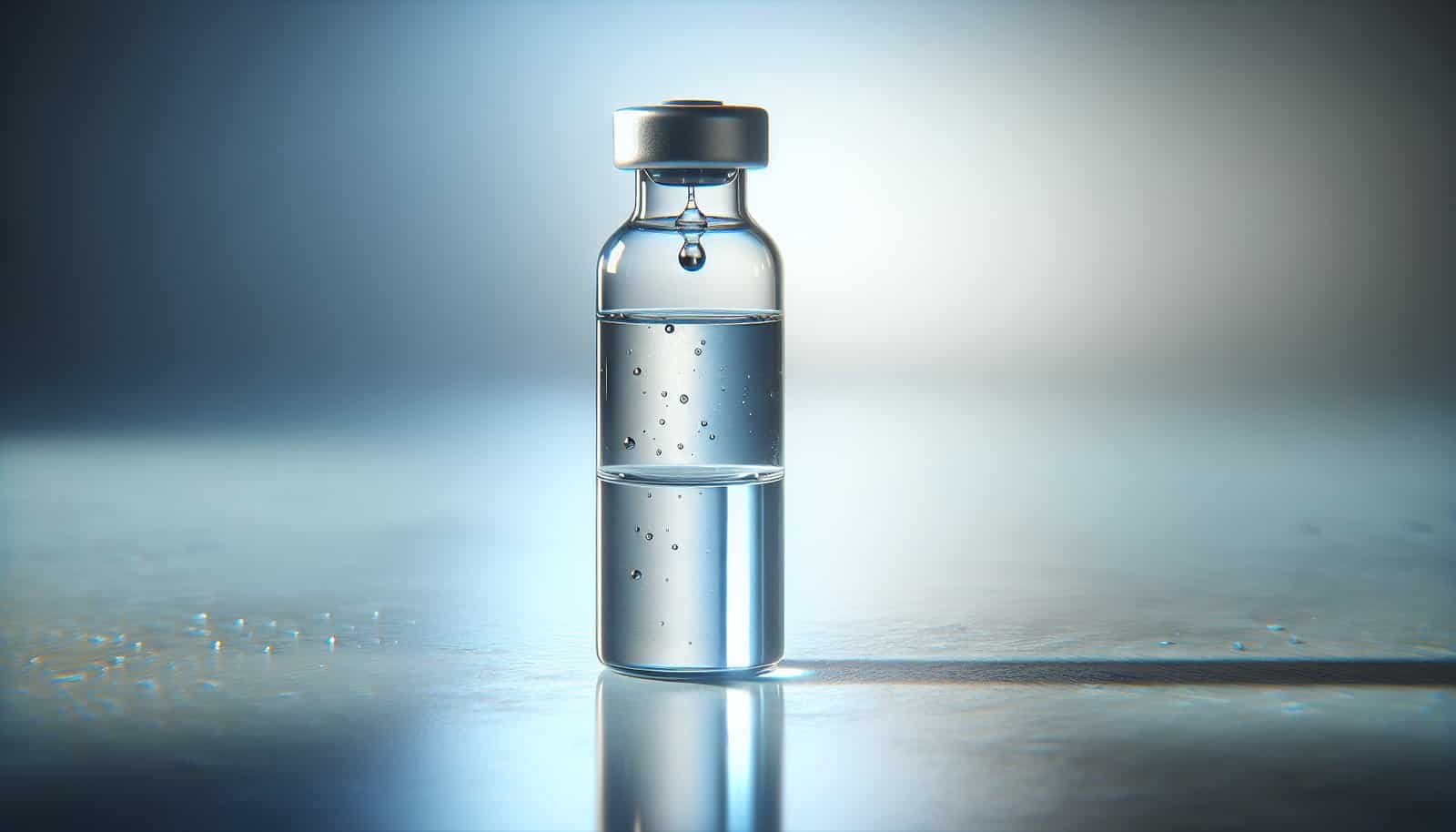Are you confident that your well water is safe to drink and use every day?
You rely on your residential well for drinking, cooking, bathing, and watering your yard, so regular testing is essential to protect your health and your home. This guide walks you through the safety tests you should run on your well, how to interpret results, how to sample correctly, and what to do if a problem shows up.
Why you should test your well water regularly
Testing confirms whether your water is safe and whether treatment or repairs are needed. Contaminants can enter your well from natural geology, nearby septic systems, agricultural activities, spills, or changes in groundwater, so periodic testing helps you catch problems early.
How often you should test
You should test at least once a year for basic contaminants and more often if circumstances change around your property. Testing frequency increases if you have small children, pregnant household members, a recent change in taste or smell, well repair, flooding, or nearby land-use changes.
Basic categories of well water tests
Water tests fall into microbiological, chemical, physical, and radiological categories. Each category tells you something different about safety, aesthetics, or operational problems with your well and treatment equipment.
Microbiological tests
Microbiological testing checks for bacteria and other pathogens that can make you sick. These tests usually look for total coliforms and E. coli as indicators of contamination.
Chemical tests
Chemical testing measures inorganic and organic compounds such as nitrates, metals (iron, lead, arsenic), pesticides, and volatile organic compounds (VOCs). Some chemicals affect health directly, while others cause taste, odor, or staining issues.
Physical tests
Physical tests measure pH, hardness, turbidity, total dissolved solids (TDS), and conductivity. These affect plumbing, appliances, and how well treatment systems will work.
Radiological tests
Radiological testing looks for naturally occurring radioactive substances, like uranium or radon, which can be present depending on local geology. Testing is especially relevant in regions known to have higher background radioactivity.

Microbiological testing: total coliform and E. coli
You should test for total coliform and E. coli at least once a year and any time you suspect contamination. Total coliforms indicate whether bacteria from the environment can enter your well; E. coli indicates fecal contamination and is an immediate health concern.
What a positive result means
If you get a positive total coliform result, it means your well has a pathway for bacteria to enter and you should retest and inspect the well. A positive E. coli result means the water is unsafe to drink until treated and the well is disinfected.
What to do if bacteria are present
If bacteria are detected, stop drinking the water and use bottled or boiled water until the problem is resolved. Disinfect (shock) the well, fix any structural issues, disinfect plumbing, and retest to confirm the water is clear.
Nitrate and nitrite: why you need to test
You should test for nitrates and nitrites annually, especially if you live near farmland, septic systems, or have livestock. High nitrates are dangerous to infants (risk of methemoglobinemia or “blue baby” syndrome) and can indicate contamination from fertilizers or septic systems.
Safe limits and health risks
The EPA health-based limit for nitrate (as nitrogen) is 10 mg/L and nitrite (as nitrogen) is 1 mg/L. If your nitrate level approaches or exceeds these values, stop using the water for infant formula and consult a water professional and your physician.
Iron and manganese: aesthetics and scale
You should test for iron and manganese at least once a year, or whenever you notice staining, metallic taste, or discoloration in laundry or plumbing fixtures. These metals are common in groundwater and cause stains, clogging, and taste issues.
What is a safe limit of iron in well water?
The EPA secondary maximum contaminant level (SMCL) for iron is 0.3 mg/L (milligrams per liter). This is an aesthetic standard related to staining and taste rather than a health-based limit; iron at higher levels commonly causes reddish-brown stains and metallic taste.
Manganese and other related concerns
EPA’s secondary guideline for manganese is 0.05 mg/L (50 µg/L) for aesthetic concerns. Both iron and manganese can foul filters and cause problems for softeners and other treatment systems.

Lead: testing and first-draw samples
You should test for lead if you have older plumbing, brass fixtures, or if your service line is metal. Lead is most likely to appear in the first-draw sample after water has sat in pipes, so you’ll often be asked to provide a “first-draw” sample for lead testing.
Health effects and action levels
There is no safe level of lead for children; for public water systems the EPA action level is 0.015 mg/L (15 µg/L). For private wells there is no federal regulation, but you should aim for as low as technically feasible and take action if testing shows elevated levels.
Arsenic: a silent contaminant
You should test for arsenic at least once when you buy a property and periodically thereafter if your area’s geology is likely to contain arsenic. Arsenic is tasteless and odorless and poses significant long-term health risks including cancer with chronic exposure.
Regulatory limit and health guidance
The EPA maximum contaminant level (MCL) for arsenic is 0.010 mg/L (10 µg/L). If your arsenic concentration is above this level, you should install appropriate treatment, typically reverse osmosis, anion exchange, or specialized media, and consider alternative drinking water until treated.
Volatile Organic Compounds (VOCs) and petroleum products
Test for VOCs and petroleum compounds if you are near gas stations, industrial sites, dry cleaners, or areas of heavy agricultural chemical use. These contaminants can be highly toxic even at low concentrations and often require advanced treatment.
Common VOCs and health impacts
Benzene, toluene, ethylbenzene, xylene (BTEX), and solvents can cause acute and chronic health problems. If a VOC is detected, stop using the water until you know the level and treatment options, and consult with a licensed professional for remediation.

Hydrogen sulfide and rotten-egg smell
If your water smells like rotten eggs, test for hydrogen sulfide. It is common in groundwater due to decomposition or sulfide minerals and typically causes odor and taste problems rather than major health risks at low levels.
Treatment options
Hydrogen sulfide can often be treated with aeration, activated carbon, or oxidizing filters depending on concentration. If you have high levels, you may need a professional-level aeration or oxidizing media system.
pH, hardness, TDS, turbidity, and conductivity
You should test for pH, hardness, total dissolved solids (TDS), turbidity, and conductivity annually to monitor water quality and equipment performance. These physical parameters affect corrosion, scale buildup, soap performance, and the effectiveness of treatment systems.
Typical concerns and remedies
Low pH (acidic water) can corrode pipes and release metals into the water; raising pH with neutralizing filters helps. Hard water causes scale, and softeners or other conditioning systems can address hardness; TDS and turbidity indicate dissolved minerals and particles that may require filtration or reverse osmosis.
Radon in water: when to test
Test for radon in water if radon gas is a known problem in your area or if indoor air radon tests are high. Radon in water is usually a smaller component of household radon risk compared to soil gas, but it can contribute to indoor air levels when water is agitated (showers, laundering).
Guidance on testing and mitigation
State guidance and recommendations vary; contact your state radon office for local standards and testing labs. If radon in water is high, treatment options include aeration systems and GAC (granular activated carbon) depending on levels and other contaminants present.

How to collect a proper water sample
Proper sampling is crucial — otherwise results may be misleading. Use the correct sample bottles (sterile for bacteria, acid-preserved for metals), follow lab instructions, and avoid disinfecting the faucet immediately prior to sampling since the sample should represent typical water.
Step-by-step sampling tips
For bacteria: use the sterile bottle, disinfect the faucet exterior with a bleach wipe, run cold water for a short time, then collect without touching the bottle rim. For metals: collect after flushing until water temperature stabilizes if the lab requires a flushed sample, or collect first-draw for lead as instructed. Keep samples cool and deliver them to the lab quickly, usually within 24 hours.
Choosing a lab and using home test kits
Use a state-certified or accredited lab for health-related testing because they follow protocols and provide defensible results. Home test kits can indicate a problem but often lack accuracy and may not capture some contaminants at low levels, so confirm positives with a certified lab.
Finding the right lab
Contact your state health department or environmental agency for a list of certified labs. For real estate transactions or official reporting, a certified lab with chain-of-custody procedures is required.
Interpreting results: what the numbers mean
When you get results, compare them to EPA MCLs (for federally regulated contaminants) or to state recommendations and health guidelines. For private wells, there’s no federal enforcement but you should use EPA standards or state guidance as a benchmark for safety.
When to be concerned
You should be concerned if bacteria are detected, if nitrate or arsenic exceed EPA limits, or if lead concentrations are high. For aesthetic contaminants like iron or manganese above SMCLs that primarily cause taste and staining, consider treatment to protect appliances and comfort.
Table: Common contaminants, typical sources, limits, and actions
| Contaminant | Typical source | EPA guidance / limit | Health or aesthetic concern | Recommended action |
|---|---|---|---|---|
| Total coliform / E. coli | Septic leakage, surface water intrusion | None acceptable for E. coli; any presence means problem | Acute illness from pathogens | Stop drinking, disinfect well, fix source, retest |
| Nitrate (as N) | Fertilizers, septic systems, animal waste | 10 mg/L (as N) | Infants — methemoglobinemia | Alternate water for infants, treat (RO, ion exchange) |
| Nitrite (as N) | Similar to nitrate | 1 mg/L (as N) | Infants — methemoglobinemia | Same as nitrate |
| Iron | Natural geology, corrosion | SMCL 0.3 mg/L | Staining, taste, clogging | Oxidizing filters, water softeners, sequestration |
| Manganese | Natural geology | SMCL 0.05 mg/L | Staining, neurological risk at high chronic doses | Specialized filters, RO |
| Lead | Old pipes/fittings, corrosion | EPA action level 0.015 mg/L (public systems) | Neurotoxin, children at risk | Replace plumbing, corrosion control, point-of-use RO |
| Arsenic | Natural geology, mining | MCL 0.010 mg/L | Carcinogenic, long-term risk | RO, anion exchange, alternate source |
| Fluoride | Natural or added in systems | MCL 4.0 mg/L; optimal ~0.7 mg/L | Dental fluorosis at high levels | If high, RO/activated alumina |
| VOCs (e.g., benzene) | Fuel spills, industrial | Varies by compound (e.g., benzene MCL 0.005 mg/L) | Acute/chronic toxicity | Advanced treatment (air stripping, carbon), stop source |
| TDS | Dissolved minerals | SMCL 500 mg/L | Taste, corrosion, scaling | RO, blending with treated water |
| Sulfate | Geology/wastewater | SMCL 250 mg/L | Taste, laxative at high levels | RO, alternative source |
| Hydrogen sulfide | Sulfur bacteria, geology | No EPA limit | Rotten-egg smell, corrosion | Aeration, filtration, chlorination |
| Radon (gas in water) | Geology | No federal MCL for water; check state guidance | Lung cancer risk from airborne radon | Aeration, GAC depending on levels |
Treatment options: matching solutions to problems
Choosing the right treatment depends on your contaminant, water chemistry, and household needs. Typical treatments include chlorination and shock disinfection for bacteria, point-of-use reverse osmosis for arsenic or nitrates, water softeners for hardness and iron (chelation vs oxidation), and granular activated carbon for some organics.
Table: Treatment methods, what they treat, pros and cons
| Treatment | Typical contaminants treated | Pros | Cons |
|---|---|---|---|
| Shock chlorination | Bacteria | Inexpensive, effective short term | Doesn’t protect against recontamination; won’t remove many chemicals |
| UV disinfection | Bacteria, viruses | Effective for microbes, no chemicals | No residual disinfectant, doesn’t treat chemicals or turbidity |
| Reverse osmosis (RO) | Nitrate, arsenic, TDS, lead | Highly effective for many contaminants | Wastewater brine, limited flow, needs maintenance |
| Ion exchange (anions) | Nitrate, arsenic (specific resins) | Effective for targeted ions | Resin sensitivity, requires regeneration solution |
| Water softener (ion exchange) | Hardness, some iron (clear-water iron) | Improves soap performance, reduces scaling | May increase sodium; not effective for colloidal iron |
| Oxidizing filters (manganese greensand) | Iron, manganese, hydrogen sulfide | Good for dissolved forms | Require regeneration/periodic maintenance |
| Aeration systems | VOCs (some), hydrogen sulfide, radon in water | Effective for gases | May need subsequent filtration for other contaminants |
| Granular activated carbon (GAC) | VOCs, some organics | Removes taste and odor, wide range | Saturates and requires replacement, may concentrate radon in media |
Cost considerations
Costs vary widely: simple lab tests range from $30–$200 depending on the panel; shock chlorination is inexpensive ($50–$200 for DIY), while installed treatment systems often range from $700 for small point-of-use units to $5,000–$20,000 for whole-house systems. Factor in ongoing maintenance, filter replacement, electricity, and annual servicing.
Budgeting for testing and treatment
Start with a comprehensive lab test for common contaminants (bacteria, nitrates, metals, pH, hardness, TDS). If problems are found, get treatment quotes and consider alternatives like bottled water or temporary solutions for drinking water while systems are installed.
Steps to take if your well tests positive for contaminants
If your lab reports unsafe results, take immediate actions based on the contaminant. For bacteria, stop using the water for drinking and call a well professional; for chemical contaminants above health-based levels, consider alternative water for drinking and consult a certified water-treatment specialist.
Practical immediate steps
Use bottled water or boil water for at least one minute for drinking and cooking (boiling will inactivate microbes but will not remove chemicals). For chemical contamination, stop using the water for consumption until you have treatment or an alternative source.
Well inspection and maintenance
You should have your well inspected every few years and after major events (flooding, earthquake, pump replacement). Regular maintenance includes checking the well cap and casing, ensuring proper drainage away from the well, and making sure nearby activities don’t create contamination risk.
When to call a professional
Call a licensed well contractor or certified water treatment professional if you detect contamination, notice sudden changes in water quality, or need to install treatment systems. For electrical or structural issues, use licensed tradespeople.
Recommended baseline test panel
When establishing a baseline for your well, test the following at minimum: total coliform/E. coli, nitrate/nitrite, pH, hardness, TDS, iron, manganese, arsenic, lead, and sodium. Add pesticide or VOC panels if you’re near agricultural or industrial activity.
When buying a home or transferring ownership
You should test the well before completing a purchase. A comprehensive lab report protects you and ensures any necessary treatment or negotiation can occur based on valid water-quality data.
Real estate and legal considerations
Private wells aren’t regulated like public systems, so responsibility typically lies with the homeowner. For real estate transactions, require a recent lab report and, if contaminants are high, stipulate remediation or price adjustments.
Chain-of-custody and certified labs
For legal or real estate matters, use a certified lab and a chain-of-custody form to ensure sample integrity and defensible results for lenders and sellers.
Frequently asked questions (short answers)
- What tests should I run annually? At minimum: total coliform/E. coli, nitrate, pH, hardness, iron, and TDS.
- How long do I wait for lab results? Most labs return bacteria results within 24–48 hours and full chemical panels in several days.
- Can I disinfect my well myself? You can perform a shock chlorination following detailed instructions, but hire a pro if structural issues or repeated contamination occur.
- Will a water softener remove arsenic or nitrate? No — softeners address hardness; arsenic and nitrate require specialized systems like RO or ion exchange.
Final checklist: what to do now
- Test annually for coliform bacteria and nitrate; test a full baseline panel when you move in or before buying.
- Use a state-certified lab for health-related tests, and follow sampling instructions carefully.
- If bacteria are detected, stop using water for drinking and disinfect the well; retest to confirm safety.
- If chemicals exceed EPA guidance, use alternative water for drinking, consult a professional, and install appropriate treatment.
- Maintain the well structure, keep contaminants (fertilizers, livestock, chemicals) away from the wellhead, and document all tests and treatments.
You don’t have to be an expert to keep your well water safe, but regular testing and prompt action when results are out of range will protect you and your family. If you need a tailored testing schedule, recommended labs in your state, or help interpreting a specific lab result, let me know the contaminant values and I’ll help you interpret them and suggest next steps.
